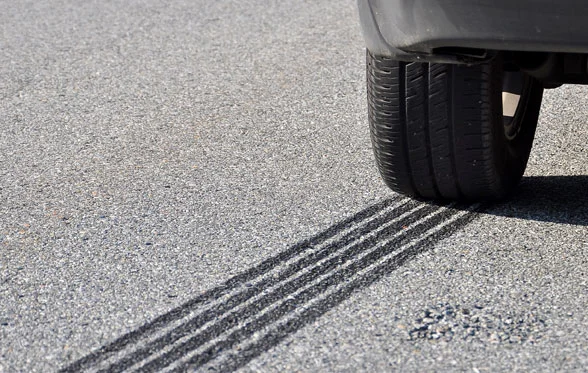One of the "new technology" requirements introduced by EC Regulation No. 661/2009 concerning "type approval requirements for the general safety of motor vehicles, their trailers and systems, components and separate technical units intended therefor" (more commonly known as the General Safety Regulation or GSR) was the mandatory fitment of advanced emergency braking systems (AEBS) to vehicles of Categories M2, M3, N2 and N3, i.e. buses and heavy trucks.
Advanced emergency braking systems (AEBS) are systems that detect the possibility of a collision with a preceding vehicle, warn the driver by a combination of optical, acoustic or haptic signals and, if the driver takes no action, automatically apply the vehicle's brakes. EC Regulation No. 661/2009 required AEBS systems to be fitted to all new types of M2, M3, N2 and N3 Category vehicle from 1st November 2013 and to all new vehicles of these Categories from 1st November 2015, but did not specify the detailed technical requirements applicable to AEBS systems.
The detailed technical requirements and test procedures for AEBS systems were later published in EU Implementing Regulation No. 347/2012. In addition to specifying the technical requirements on the system operation and detailed test procedures to verify the system performance, this Regulation also exempted certain types of vehicle from the mandatory fitment of AEBS systems (e.g. urban buses and off road vehicles). Also, recognising that some additional time would be required to fully develop AEBS systems, especially for certain types and configurations of vehicle, (EU) No. 347/2012 introduced the mandatory AEBS fitment requirements in two stages:
- For the first stage, applicable from 1st November 2013 for new types of vehicle and from 1st November 2015 for all new vehicles, the AEBS requirements were only applied to M3 Category vehicles, N2 Category vehicles with a GVW greater than 8,000 kg and N3 Category vehicles that are equipped with pneumatic or air/hydraulic braking systems and with pneumatic rear axle suspension systems.
- For the second stage, applicable from 1st November 2016 for new types of vehicle and from 1st November 2018 for all new vehicles, the AEBS requirements were extended to cover all M2, M3, N2 and N3 Category vehicles, other than those specifically exempted.
For M3 Category vehicles, N2 Category vehicles with a GVW greater than 8,000 kg and N3 Category vehicles, the AEBS system performance requirements specified for the second stage were slightly more stringent than those specified for the first stage. However, for M2 Category vehicles and N2 Category vehicles with a GVW not exceeding 8,000 kg, (EU) No. 347/2012 did not specify AEBS system performance requirements as these had not been fully defined when the Regulation was published.
Much discussion and negotiation over the AEBS system performance requirements for M2 Category vehicles and N2 Category vehicles with a GVW not exceeding 8,000 kg has taken place between industry and government since the publication of (EU) No. 347/2012, with most of this negotiation taking place within the UN ECE Informal Group on AEBS to ensure full alignment between the EU requirements and those contained in the UN ECE Regulation on AEBS; UN ECE Regulation No. 131.
Now that AEBS system performance requirements for M2 Category vehicles and N2 Category vehicles with a GVW not exceeding 8,000 kg have been agreed, (EU) No. 347/2012 has been updated to include them. The necessary amendments to (EU) No. 347/2012 were introduced by EU Regulation No. 2015/562, which was published in the Official Journal on 9th April 2015.
As expected, the AEBS performance requirements applicable to these lighter vehicles are less stringent than those applicable to the heavier vehicles. In particular, the speed of the target vehicle for the moving target test is much higher; 67 km/h vs. 12 km/h. However, the new Regulation includes a clause specifying that this speed will be reviewed before 1st November 2021.
